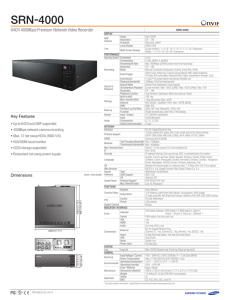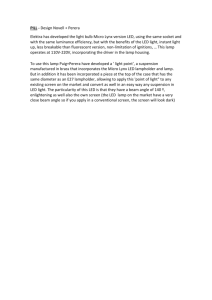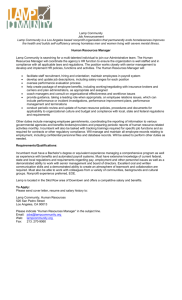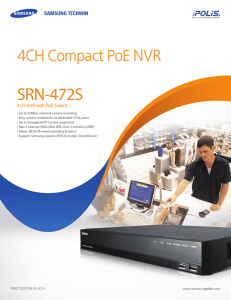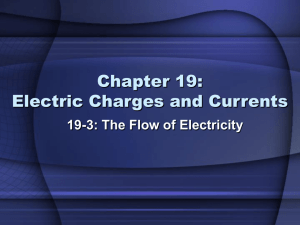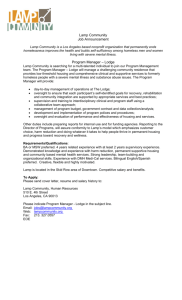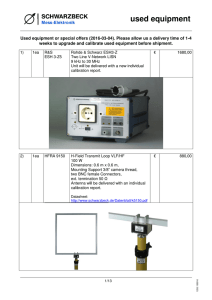LAB #: 1 TITLE: OHM'S LAW NAME: A. GREAT STUDENT DATE: 1
advertisement
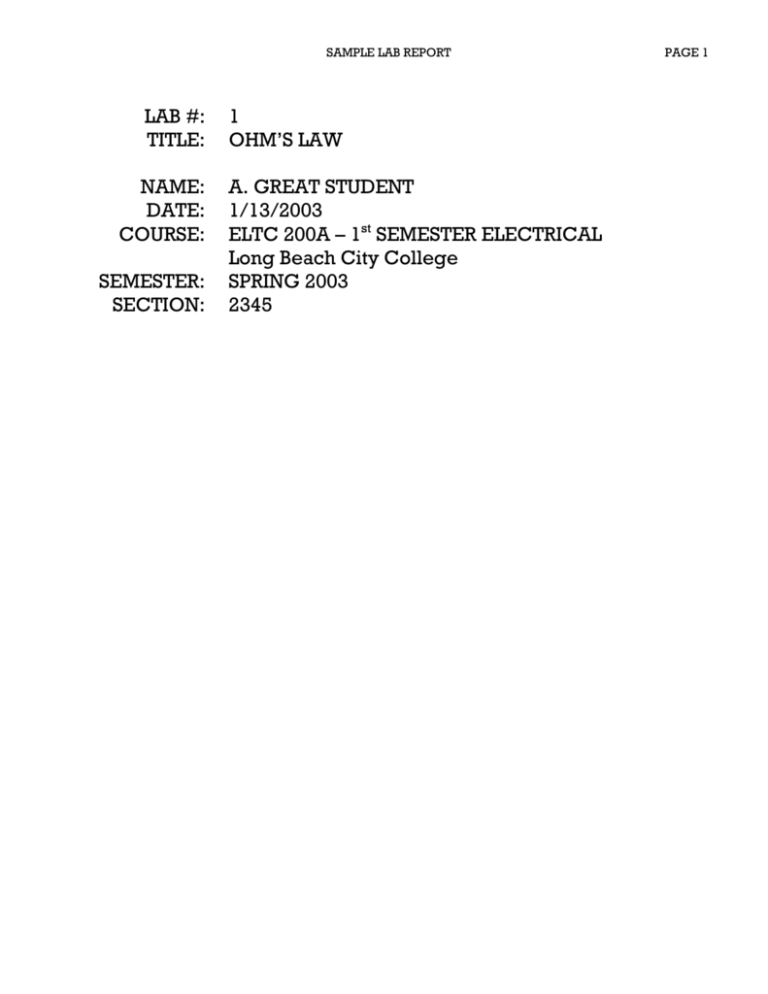
SAMPLE LAB REPORT LAB #: TITLE: NAME: DATE: COURSE: SEMESTER: SECTION: 1 OHM’S LAW A. GREAT STUDENT 1/13/2003 ELTC 200A – 1st SEMESTER ELECTRICAL Long Beach City College SPRING 2003 2345 PAGE 1 SAMPLE LAB REPORT PROCEDURE: PAGE 2 The following materials were used in this lab 1ea 1ea 1ea 1ea 2x2 Project Board #14 gage insulated wire SPST Knife Switch DPST Knife Switch 120V porcelain lamp socket 2ea 1ea 1ea 1ea 1ea Patch Cords for the XM Board 100W / 120V lamp 60W / 120V lamp 550W heater cone 50K ohm, 225 W resistor 1ea DC Ammeter 0-25amps #18 The following equipment was used in this lab 1ea 1ea Analog Multimeter #23 DC Milliammeter #20 The following tools were used in wiring this lab Lineman’s Pliers, Wire Strippers, 6” Screwdriver, Staple Gun 1. 2. 3. 4. 5. Draw the circuit diagram and have it approved by the instructor Wire the board with the meters and lamp socket as shown in the diagram Take cold resistance readings for all of the chosen loads. Recorded values in table 1 Obtain approval from the instructor to energize the circuit Installed one load at a time and measured the voltage and current for each load. The values were recorded in table #1 6. Disconnected the loads and disassembled the project board 7. Calculated the ohms and watts based on the measured amperage and voltage readings 8. Answered questions. RECORDED DATA FROM LAB: Cold Resistance Voltage Reading Amperage Reading 120Volt 60W Lamp 10Ω 120V 120Volt 100W Lamp 6Ω 120V Heater Cone 550 Watts 120V 50KΩ 120V 0.5A 0.83A 4.6A 0.002A 50K Ohm Resistor TABLE I Calculated Ohms Calculated Watts 120Volt 60W Lamp 240Ω 60W 120Volt 100W Lamp 144Ω 100W TABLE II Heater Cone 550 Watts 26Ω 550W 50K Ohm Resistor 50KΩ 0.29W SAMPLE LAB REPORT PAGE 3 GRAPHS: There are no graphs required for this lab DIAGRAMS: BYPASS SWITCH DPST A V Fused 120VDC from XM Board LOAD UNDER TEST QUESTIONS: 1. This is the answer for question #1 2. This is the answer for question #2 3. This is the answer for question #3 4. This is the answer for question #4 5. This is the answer for question #5 6. This is the answer for question #6 Questions and answers both must be written. SAMPLE LAB REPORT PAGE 4 SUMMARY: (A summary describes what you did in the lab) This lab was a little confusing at first. I didn’t understand how I was supposed to come up with the resistance while the load was connected in the circuit. At first I thought that I was supposed to power it up and then quickly turn it off and take a resistance reading. One of my lab partners thought that we should connect the ohmmeter across the load while it was powered. Once we realized that we were on the wrong track and that the way to get the resistance values is through calculations, everything started to come together. We then went on to take the required measurements and then calculate the resistance in each case. The cold resistance of the lamp or heater was measured with an ohmmeter out of the circuit and the hot resistance was calculated based on voltage and current measurements. CONCLUSION: (A conclusion is what you learned) This lab explained the differences between cold resistance and hot resistance. It also showed how to calculate the hot resistance through other readings instead of directly measuring the resistance. By knowing the volts across a load and the current through the load, we can calculate the resistance of the load while under power. That resistance R = E/I. In the same manner, the wattage of the device can be calculated. W = E * I I now understand how powerful ohms law is and if I have two values, I can easily calculate the third missing value. END OF REPORT The list below is a set of possible grading criteria by the lab instructor. The actual grading may vary from instructor to instructor. Your instructor will inform you on his or her grading criteria Item Procedure: Recorded Data: Diagrams/Graphs: Answers to Questions: Summary: Conclusion: TOTAL POINTS: 100 NOTE: Reports must be done in a neat and professional manner. Some instructors may require that the report be typewritten or done with a computer. Your instructor will tell you if handwritten reports are acceptable. Definitions: 1. Procedure – I.) A series of steps taken to accomplish an end: a medical procedure; evacuation procedures. II.) A process or series of acts especially of a practical or mechanical nature involved in a particular form of work 2. Summary – I.) Writing that presents the main points in a concise form II.) Presenting the substance in a condensed form; concise: a summary review 3. Conclusion – I.) The result or outcome of an act or process (lab experiment) II.) A position or opinion or judgment reached after consideration.
